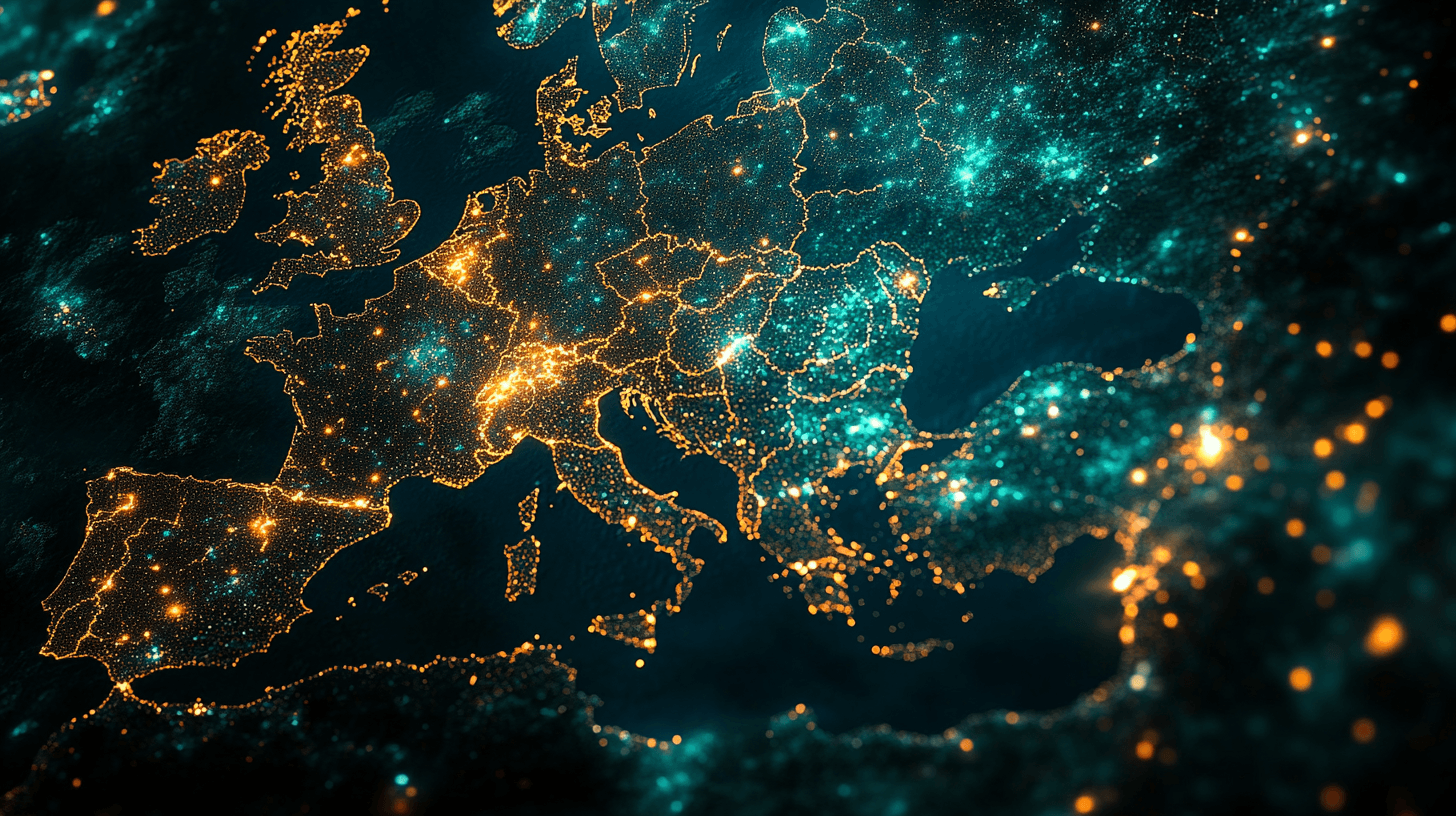AI is hungry for electricity, but can help us use less of it
AI developments are driving global electricity demand. Nevertheless, AI can assist in reducing energy usage.
Published on May 1, 2025

© Unsplash
Mauro swapped Sardinia for Eindhoven and has been an IO+ editor for 3 years. As a GREEN+ expert, he covers the energy transition with data-driven stories.
AI, particularly in its general purpose declination, has often been defined as a horizontal technology, having an impact across all domains. As more and more uses of the technology emerge, so it soars the need for energy to power the training of its algorithms. The latest estimates from the International Energy Agency (IEA) suggest that global electricity demand from data centers will double by 2030, reaching 945 TWh–more than Japan’s total electricity consumption.
If on the one hand AI comes with an increasing appetite for electricity, on the other hand, its algorithms can curb power utilization. This is particularly relevant considering the increasing complexity of the energy systems, which are progressively more flexible and decentralized. As a result, energy companies have been deploying more of these solutions to enhance their operational efficiency. But to what extent can AI reduce energy consumption?
The aforementioned report by the IEA provided some interesting figures to consider, forecasting the impact of AI on energy reduction.

Behind the Figures
In Behind the Figures, we take a deep dive into numbers. Using charts and graphs, we break down figures and provide context to help you make more sense of them.
The use of AI in energy systems
There are many potential uses for AI in energy systems. Algorithms can be used to make grids more intelligent in coping with the fluctuations in renewable energy production, for instance. Alternatively, they can predict solar and wind power generation, as well as optimize energy storage, indicating when to charge or discharge batteries.
In the bar chart below, we can see an overview of what AI is currently doing in the electricity systems.

Utilities using AI applications by category, 2024 - © IEA. Licence: CC BY 4.0
AI is stepping in, particularly in asset operation and maintenance. In the former, it is helpful to offer assistance and schedule an activity. In the latter case, AI-driven image recognition and predictive maintenance are making a difference. Although its use in real-time operation is limited, AI is helping with load forecasting. At the same time, it is supporting grid development activities through both activity scheduling and system expansion studies.
AI energy savings
The IEA simulated AI applications at the sectoral level by 2035 through a widespread adoption case. In this scenario, experts consider AI-led interventions informed by real-world studies that can be scaled to the sectoral level. According to the estimates of this simulation, utilizing AI in power plant operations and maintenance can potentially yield annual savings of $110 billion. These savings originate from avoided fuels and lower costs.
Additionally, AI would facilitate a more seamless integration of renewables into the grid. As per the IEA, up to 175 GW of additional transmission capacity could be unlocked in existing infrastructure through the use of AI.
Furthermore, the agency also analyzed the potential impact of AI across energy end-use sectors—in line with the widespread adoption case. Light industry, such as the manufacturing of electronics and machinery, can potentially save 8%. Transport savings could reach up to 20%.
Increasing data centers' efficiency
At the same time, data centers are also improving their energy efficiency. Over the past years, they have optimized their power utilization. There is a metric, defined as power usage effectiveness (PUE), which determines the efficiency of a data center by dividing the amount of energy entering the facility by the power used to run the IT equipment. The closer this value is to 1, the more efficient a data center is.
How does this efficiency translate into emissions? According to the IEA, the CO2 output of data centers could surge to 300 million tonnes by 2035, up from 180 million tonnes, or to 500 million tonnes in a high-demand scenario. The organization highlights that these would represent 1.5% of the overall energy sector emissions, which could be offset by the efficiency gains AI would deliver in its applications.
AI data centers and energy developments
Moreover, AI and data center developments are often coupled with low-carbon energy ones. In the Netherlands, 88% of the data centers that are part of the umbrella organization Dutch Data Center Association (DDA) are powered by renewable energy. In the United States, Microsoft signed an agreement to restart operations at the Three Mile Island nuclear plant in Pennsylvania, securing its electricity pipeline.
Additionally, Google has signed an agreement with Kairos Power, a small modular reactor company, to build 500 MW of nuclear capacity by 2035. Amazon also backed 5 GW of SMR projects to be built in the US by 2039. OpenAI CEO Sam Altman was, until recently, also the chairman and one of the early backers of SMR company Oklo, which recently went public.
AI and energy: two sides of the same coin
The IEA also underscores the role AI can play in accelerating energy innovation, given its centrality in the innovation pipelines. Nevertheless, the agency notes that only a marginal part of innovative energy startups employ an AI-first patent approach. Only 1% of energy patents include AI as a feature of the patented technology.
AI developments and energy ones are intrinsically linked and will be even more so in the decades to come. The demand for computing needs to be closely controlled; however, AI can also help us use resources more efficiently and effectively.

Watt Matters in AI
Watt Matters in AI is an initiative of Mission 10-X, in collaboration with the University of Groningen, University of Twente, Eindhoven University of Technology, Radboud University, and the Convention Bureau Brainport Eindhoven. IO+ is responsible for marketing, communication, and conference organization.
More information on the Conference website.
